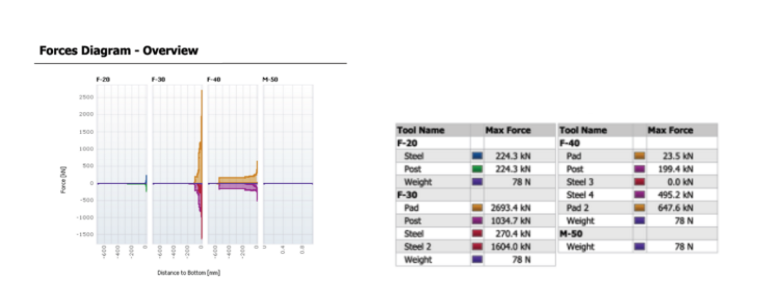How Tonnage Calculations for Sheet Metal Can Make or Break Your Project
Contents
Tonnage calculations need to be precise in order for a sheet metal tooling project to be successful. In best case scenarios, accurate tonnage calculations for sheet metal will help clients quote projects confidently and know the required forces to choose the correct press size.
Worse case scenario, inaccurate tonnage calculations can cause a project to fail completely.
AutoForm simulations allow StampingSimulation to quickly and accurately calculate all forces required in each tooling stage for your project.


How do you calculate your tonnage requirements?
In the good old days, it was normal to look up a table or standard formula for basic forming or bending operation. Or there was history within the company for similar parts and it could be assumed (sometimes wrongly) that a part of similar size and shape would require the same tonnage.
Another method was to assume based on experience that the tonnage “should not” exceed some limit that seemed “about right”, and “we’ll find out in the press”.

Although there are times when these methods have paid off, even just one incorrect “calculated guess” or assumption will lead to losses and problems that far out way the cost of using simulation.

Benefits of AutoForm for Tonnage Calculations for Sheet Metal
Calculating forming forces (binder, pad, punch, post, die, etc) has become highly accurate and convenient in the latest release of AutoForm R6. The forces acting on each and every tool in contact with the sheet are calculated as part of every step of the simulation, without even asking!
Furthermore, AutoForm simulation can test “what if” scenarios to determine if a given spring force or pressure is adequate OR will cause an undesirable forming problem. This is because AutoForm can handle forces in two unique ways:
- Do nothing. AutoForm calculates all forming forces needed. The ideal forces are reported.
- Input set spring forces. AutoForm simulates the set forces and illustrates whether tooling will bounce, open or fail to form the part.

Regardless, AutoForm is using the properties of the sheet metal material to determine how it reacts to contact with the rigid tooling. Needless to say, even as the material work hardens during forming, AutoForm is accounting for the additional forces needed to continue to stretch/draw/form the material.
In a deep draw operation, AutoForm will automatically (as in 1. above) increase the binder pressure to ensure the sheet material is always flat and not wrinkling under the binder. The binder pressure may increase during the stroke and the result can be interrogated in every detail at any step of the forming process.

A draw with inadequate binder pressure will result in wrinkles – an expensive disaster if encountered in reality.
In today’s sophisticated hydraulic presses, the binder pressure curve may also be programmed into the simulation, to control the binder pressure at any step of the forming process, thereby making otherwise impossible to draw parts, possible.
AutoForm is also able to account for the changing sheet thickness during a forming operation and therefore includes the “real world” effect of lost tooling contact in some areas of the part. This makes AutoForm R6 the most accurate tonnage calculation tool known to mankind for even the most complex sheet metal part.
Contact us today to get a free project quote!
